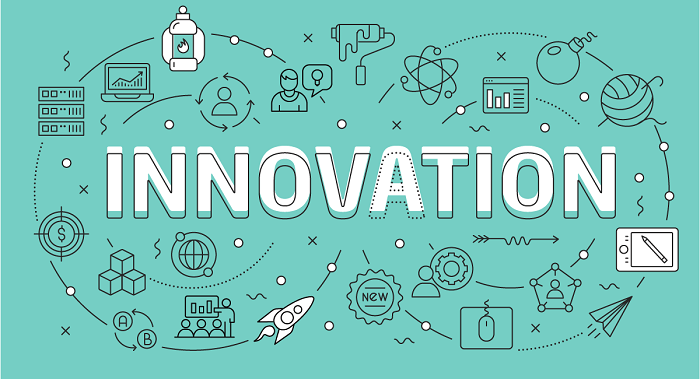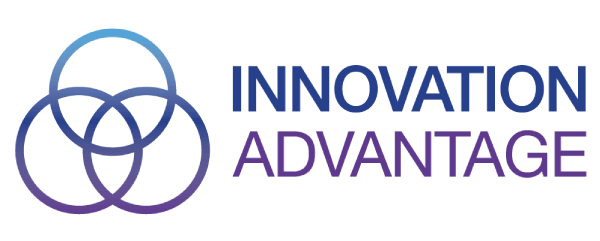Innovation DefinitionCreativity is the application of concepts in a way that creates new products or services or enhances the provision of existing ones. Innovation is "a new or altered entity realizing or transferring value" by ISO TC 279 in the standard ISO 56000:2020. Others have various meanings, but they all emphasize the novelty, development, and dissemination of concepts or technologies. 
Creating more efficient goods, procedures, services, technologies, works of art, or business models, which inventors then make accessible to consumers, governments, and society, is a common way for innovation. Innovation and invention are closely related but not the same thing. While some innovations call for a new invention, not all do. Innovation is more likely to involve the practical application of an invention (i.e., new/improved ability) to impact a market or society significantly. When a technical or scientific issue needs to be addressed, technical innovation frequently takes the form of an engineering solution. You can use a variety of innovations in your day-to-day life to enhance outcomes, each with a specific goal in mind. Innovations that are drastic, gradual, and disruptive are among them. Every business aspires to innovate, dominate its industry, and provide the finest products, services, and partnerships possible. But what exactly is innovation, other than a brand's hopes and aspirations, such as promoting the improvements it wants to see? What sorts of innovation are there? And how are they put into practice in a business? That's precisely what this article will discuss. Find out by reading on! What's Innovation?
Innovation offers a different approach to practice, positively affects the economy and human behavior, resolves issues, or improves the practicality of people's everyday lives. It can be linked to a good or service, a method of doing business, a sector of the economy, a mode of production, a technological advancement, or anything else that brings about an ongoing and essential change. People and businesses use the numerous opportunities technology provides for invention to occur. Technology serves as the foundation for all innovation because, without effective tools, innovation may occur at the incorrect moment and limit your company's ability to grow. Keep in mind that innovation entails exceeding shareholder and market standards. It would be best to act quickly, accurately, and precisely for this to occur. What are the Stages of the Innovation Process?Creativity might seem like an uncommon skill that only the most fortunate or brilliant people possess. However, it can happen in any business, regardless of size or industry. The phases of the invention process are straightforward, and innovation requires practice and a system. Study more about them here:
Technology must be used at every step. Processes can be sped up as a result, and versions before the invention can be documented, monitored, compared, tested, and evaluated for total performance. Types of Innovation
Fundamentally, there are three different kinds of innovation: Disruptive, Gradual, and Extreme. They may change depending on the market, speciality, brand identity, services, and goods provided. It's critical to understand these types if your business wishes to innovate. Figure out what makes each of them unique: 1. Radical InnovationAs the name implies, a radical invention alters a brand's conditions, whether in terms of the market or the company's dynamics. A company's positioning, working style, procedures, services, and goods it offers, as well as how it interacts with customers, can all alter drastically. Apple's iPhone is an illustration of the extreme invention. Smartphones already existed when it was debuted, but Apple added features that altered the industry and increased its appeal. 2. Incremental InnovationIncremental innovation is a different kind of innovation. It adds additional features to a product, brand, or production process without advocating a radical change. It's typically a development of an innovation the brand has previously adopted, which complements. It delivers improvements, whether they are for staff members, clients, or aspects of a business. Gmail, developed to send emails rapidly, is an example of incremental innovation. Over time, other features were added to enhance the user experience and make it more beneficial and competitive. 3. Disruptive InnovationDisruptive innovation has recently been encouraged by changes in technology and behavior. This innovation focuses less on a particular brand, item, or service and more on the market. In general, it's a scalable change that reaches many people at once. Nevertheless, it can be leveraged by anything a firm has provided and, as a result, created its identity. Netflix is one example of a disruptive invention, as the market formerly relied on businesses like Blockbuster for movies and TV shows. When Netflix started renting DVDs via mail, they decided to innovate. Blockbuster was forced out of business when it began providing video streaming services through a monthly fee. This was not only novel, but it also provided Netflix with a reliable monthly income. 4. Product InnovationProduct invention makes a noticeable new addition to the market. For instance, the invention of television, which brought amusement, sound, and picture into people's homes, was novel. It was a revolutionary innovation that, after gaining public approval, turned disruptive and eventually started to depend on incremental innovation. The entire globe observed the introduction of various types of TV, including colour, cable, flat-screen, and, today, smart TV. 5. Service InnovationFood delivery is an obvious illustration of service ingenuity. Customers used to have to step into a restaurant or request takeout to dine there for a very long time. At that point, the market innovated and began to provide delivery services, enabling consumers to place any purchase with just a phone contact. Over time, it became feasible to order food through websites, and today we have mobile applications at our disposal for ordering food. 6. Technological InnovationThe most obvious form of invention is technological innovation. The development of technology opens up a lot of possibilities. When one thinks back a few centuries, the Industrial Revolution is a good illustration because it altered workplace productivity, work processes, and even employees' lives. However, in a contemporary setting, the internet and cell phones are the most notable instances of revolutionizing goods and services and social behavior. As we can see in the case of Industry 4.0 technologies, technological advancement allows us to accomplish tasks that would otherwise be impossible using only human strength. 7. Logistical InnovationA message sent via the postal could take up to a month to arrive. On average, it would take three months for goods from other countries. To remedy this, businesses and wholesalers developed in the logistics field by building storage facilities and purposeful delivery hubs. These days, you can even order delivery drones through applications! 8. Marketing InnovationThe methods for getting new clients have changed, and marketing advances are becoming more prevalent. Advertising strategies can occasionally be novel. For instance, when social media was developed, many companies innovated by using those channels for promoting rather than print media and television. 9. Organizational InnovationNumerous other types of the invention are brought about by organizational innovation. They deal with systemic adjustments and procedures that boost output, services, goods, and procedures. Examples of organizational innovation are home offices, management software, customer service robots, and apprentice programs where workers learn about all business divisions before working in one of them. 10. Innovation in the Business ModelIn startups, innovation in business strategy is very prevalent. Markets are a straightforward illustration. Online retailers like Amazon act as a middleman between consumers and vendors. Virtual institutions would be another illustration. Many financial institutions today conduct all of their transactions online and have no real locations for client support. 11. Innovation in Production ProcessesIt's fascinating to emphasize environmental consciousness in this context. For instance, many makeup companies develop methods that don't use animals. 12. Financial InnovationDeveloping new financial goods, services, or procedures is known as financial innovation. Developing financial instruments, technology, and payment methods has contributed to financial innovation. The financial services sector has transformed because of digital technology, altering how people save, borrow, invest, and purchase. FinTech firms, like Stripe, assist small businesses with online payments, and investment broker Robinhood aims to democratize finance and to invest while established banks continue to invest in mobile banking. Because of these developments, consumers, borrowers, and companies now have access to more financial providers. Advantages of Innovation
When a market, market segment, or company chooses to innovate, it advances civilization. However, in the real world of a business, a company that innovates, particularly in its processes, enjoys many benefits, including:
How Do You Implement Innovation in a Company?Do you know what "marketing a concept" means? This has to do with putting the invention into practice. It involves demonstrating to team members, clients, and collaborators why the invention was made, how it functions, and why it is the best course of action. The next step is to decide what works best for the business, be willing to make any required adjustments, and encourage approval of the novel. Here are some pointers on how to successfully introduce creativity into your company.
Use Technology to Support InnovationIt's critical to have the technology resources necessary to implement innovation in your company in addition to the techniques already outlined. Companies may automate all processes through digital transformation, giving them more control over their existing condition and how they respond to innovation. With management software, you may gather and evaluate data to ensure that innovations are founded on reliable facts. The logic of Business Process Management (BPM), which alters a company's culture to think about processes in an interconnected and cyclical manner while focusing on continuous improvement, is one way to put this into effect. To make this happen, you can automate and carry out operations in a digital environment using technologies like BPMS (Business Process Management Suite). Creativity and InnovationInnovation generally differs from creativity in that it places more stress on the application of innovative ideas in an economic context. In 2016, Amabile and Pratt made a distinction between creativity and invention, based on the literature, defining creativity as "the production of novel and valuable ideas by a person or small group of people working together" ("the successful implementation of creative ideas within an organization"). MeasuresSince measuring innovation entails comparability so that quantitative comparisons can be made, measuring innovation is naturally challenging. But surprise is a necessary component of innovation. Thus, when comparing different goods or services, comparisons are frequently useless. Nevertheless, Edison et al. discovered 232 innovation measures in their study of the literature on innovation management. Inputs into the innovation process, output from the innovation process, the effect of the innovation output, measures to access the activities in an innovation process, and availability of variables that enable such a process are the five categories they categorized these measures. Measures for innovation can be taken at two distinct levels: Organizational and Governmental. 1. Organization LevelThe organizational level innovation measurement considers individuals, team evaluations, and private businesses of various sizes. Organizations can measure innovation using surveys, workshops, consultants, or internal benchmarking. Organizational innovation is currently not yet measured in any standardized manner. Business metrics are typically designed around balanced scorecards, which encompass a variety of innovation-related topics, including financial business metrics, the effectiveness of the innovation process, staff contributions and motivation, and consumer benefits. Measured metrics, which may include new product revenue, R&D expenditures, time to market, customer and staff perception and happiness, the number of patents, and additional sales due to prior innovations, will differ greatly amongst organizations. 2. Political LevelMeasures of innovation at the political level are primarily concerned with a nation's or region's ability to gain a competitive advantage through innovation. In this context, various assessment frameworks, including those of the European Foundation for Quality Management, can be used to assess an organization's capabilities. Standard rules for evaluating technological product and process innovation are provided in the OECD Oslo Manual (1992). The 1963 Frascati Manual is viewed as a supplement by some to the Oslo Manual. Marketing and organizational innovation are included in the new Oslo Manual from 2018, which takes a broader approach to innovation. For instance, the European Community Innovation Surveys employ these standards. Alternative metrics for innovation have historically included spending, such as the proportion of GNP invested in R&D (Research and Development) (Gross National Product). There has been much debate about whether this is an accurate indicator of innovation, and the Oslo Manual has taken some of the criticism leveled at past measurement methods. Conventional measurement techniques still influence many policy decisions. The Lisbon Strategy of the EU specifies as a target that their average R&D spending should be 3% of GDP. IndicatorsAccording to many academics, there is a strong bias in favor of the "science and technology mode" (S&T-mode or STI-mode), while the "learning by doing, using, and interacting mode" (DUI-mode) is disregarded, with little study and evaluation done on it. For instance, a facility may have cutting-edge technology and tools but lack essential activities necessary for invention. A widely held industry belief that comparative cost-effectiveness research is a type of price control that lowers industry returns, restricts R&D spending, stifles future innovation, and compromises new goods' access to marketplaces is unsupported by empirical data. According to some academics, cost-effectiveness research is an important value-based innovation measure that assigns "truly significant" therapeutic advancements (i.e., those that provide "health gain") greater prices than open market processes. Such value-based pricing has been seen as a way to tell the business what kind of invention should be rewarded with public funds. An Australian academic argued that national comparative cost-effectiveness analysis systems should be seen as measuring "health innovation" as an evidence-based policy concept for valuing innovation separate from valuing through competitive markets. This method requires strong anti-trust laws to be effective because both methods of assessing pharmaceutical innovations are mentioned in Annex 2C.1 of the Australia-United States Free Trade Agreement. DiffusionGabriel Tarde, a pioneering researcher, first drew the S-shaped diffusion curve in 1903 and launched the field of dissemination of innovation study. According to Tarde, the innovation-decision process consists of several stages, including knowledge formation, attitude formation, adoption or rejection of the innovation, execution, and use validation of the decision. Innovations can be disseminated from the innovator to other people and organizations after they have occurred. It has been suggested that the's-curve' or diffusion curve can be used to explain the lifetime of inventions. The s-curve plots the increase in income or output over time. Growth is typically sluggish in the early stages of innovation as the new product asserts itself. Customers start to require products at some point, which causes product development to accelerate. Growth can persist thanks to small-scale improvements or new product developments. Growth diminishes and may even decrease toward the conclusion of its lifecycle. No amount of new investment in that product during the later phases will result in a typical rate of return. The s-curve is based on the presumption that new goods will likely have a "product life," which includes an initial era of rapid revenue growth followed by a period of decline. Many innovations never leave the bottom of the curve and never generate average returns. Typically, innovative businesses will develop fresh ideas, eventually displacing more traditional ones. More s-curves will emerge to replace the older ones, driving growth upward. The first curve in the image above represents modern technology. The second illustrates a developing technology that today produces slower growth but will soon surpass existing technology, resulting in even faster growth. Several things will affect how long someone lives. Sources of InnovationInnovation can happen due to a significant system breakdown, random chance, or the combined efforts of many diverse agents. According to Peter F. Drucker, changes in market structure, local and global demography, human perception, the quantity of scientific information that is now known, and other factors are the general sources of innovations. Three stages of the technological change process as originally modeled Manufacturer innovation is the conventionally acknowledged source of innovation in the most basic linear model. Here, an agent (individual or company) innovates to commercialize the innovation. Particularly in the business sector, business expenditure on R&D (BERD), which has grown over the years on the costs of the diminishing R&D spent by the public sector, is the commonly used input for innovation. End-user innovation is a different source of innovation that is only now receiving widespread attention. When existing items are not meeting the demands of an agent (individual or company), they produce an innovation for their own (personal or internal) use. End-user innovation is by far the most significant and crucial, according to MIT economist Eric von Hippel, who wrote the seminal book on the subject, "The Sources of Innovation." Government PoliciesInnovation is a major force in advancing society and the economy because of its positive effects on productivity, quality of life, and economic growth. As a result, policymakers have sought to create conditions that will encourage innovation, including sponsoring R&D, adopting regulations that do not impede innovation, funding the formation of innovation clusters, and utilizing public purchasing and standardization to "pull" innovation through. For instance, experts are urging the U.S. federal government to establish a National Infrastructure Foundation, a flexible, collaborative strategic intervention organization that will house innovations programs from dispersed silos under one entity, inform federal officials on innovation performance metrics, strengthen industry-university partnerships, and support initiatives for innovation economic development, particularly to strengthen regional clusters. A cluster development funding program would also be implemented because clusters serve as the geographical breeding grounds for novel goods and procedures. Other national worries, such as government debt, carbon footprint, and oil reliance, would be addressed by concentrating on innovation in information technology, renewable energy, and precision manufacturing. In their ongoing Regional Innovation Clusters program, the U.S. Economic Development Administration recognizes this fact. The United States must also consolidate its supply chain, strengthen its capacity for applied research, and innovate its secondary processes. Many nations acknowledge innovation's significance, such as Japan's Ministry of Education, Culture, Sports, Science and Technology (MEXT), Germany's Union Minister of Education and Research, and the Ministry of Science and Technology in the People's Republic of China. Russia's innovation initiative is the Medvedev modernization programme, which seeks to build a diverse economy built on high technology and innovation. The Western Australian government has created several innovation rewards for government agencies. The first government organization in Western Australia to launch its Innovation Initiative was Landgate. Some areas have acted proactively to encourage invention. To improve regional skills, many regional governments are establishing innovation organizations. To make Medellin, Colombia, a knowledge metropolis, the government established Ruta N in 2009. ConclusionAppropriate software tools may help adopt innovative methods and a culture of innovation. The Internet provides new opportunities for cooperation and communication. For instance, innovation teams can set up offices for various projects, co-develop ideas, and prepare them for execution. Tools for innovation also ensure that impediments to creativity and innovation are removed from the workplace and that an innovation culture is established there. The correct culture may be created so that workers see innovations as beneficial developments and support them with zeal and energy.
Next TopicIntegrity Definition
|
 For Videos Join Our Youtube Channel: Join Now
For Videos Join Our Youtube Channel: Join Now
Feedback
- Send your Feedback to [email protected]
Help Others, Please Share









